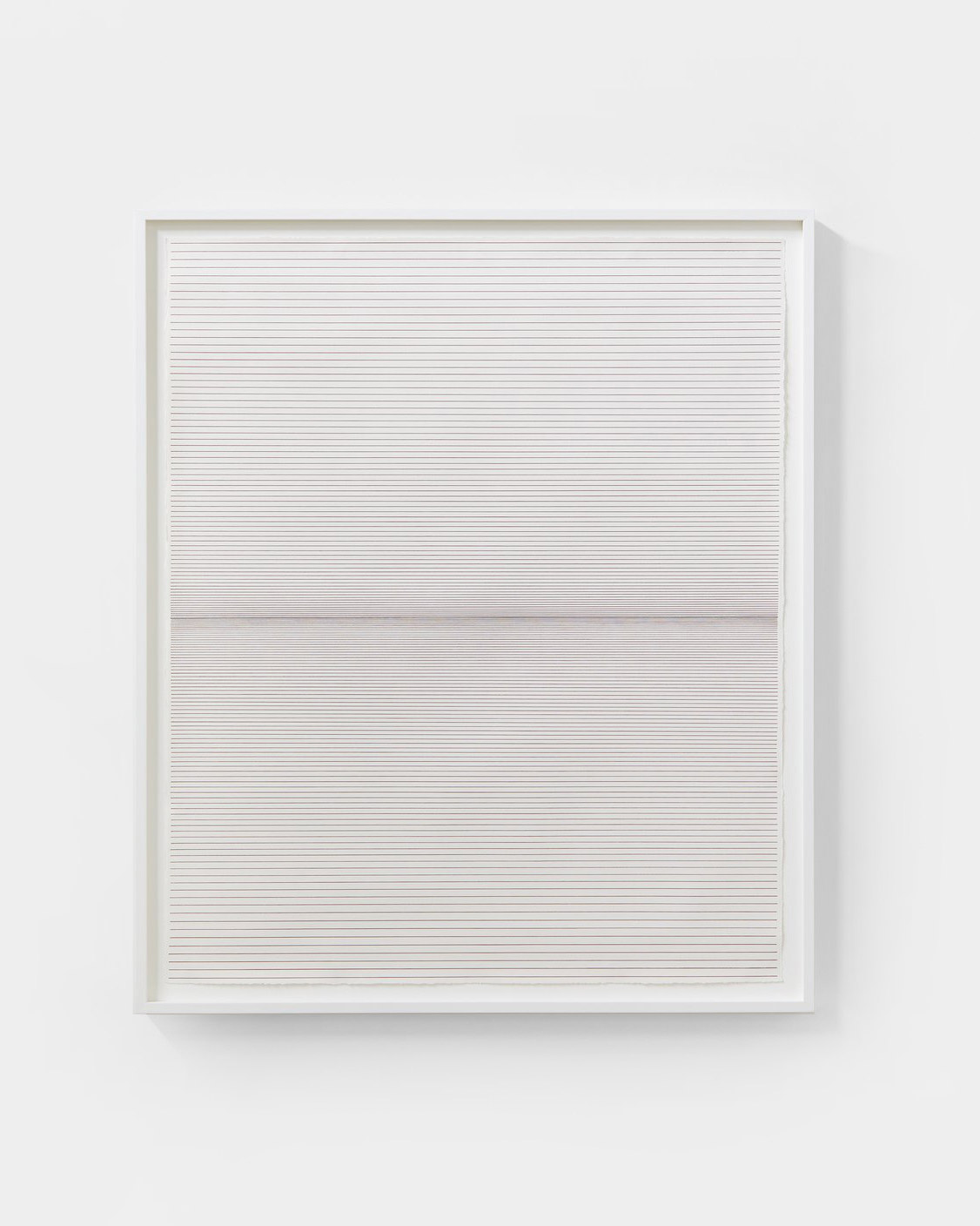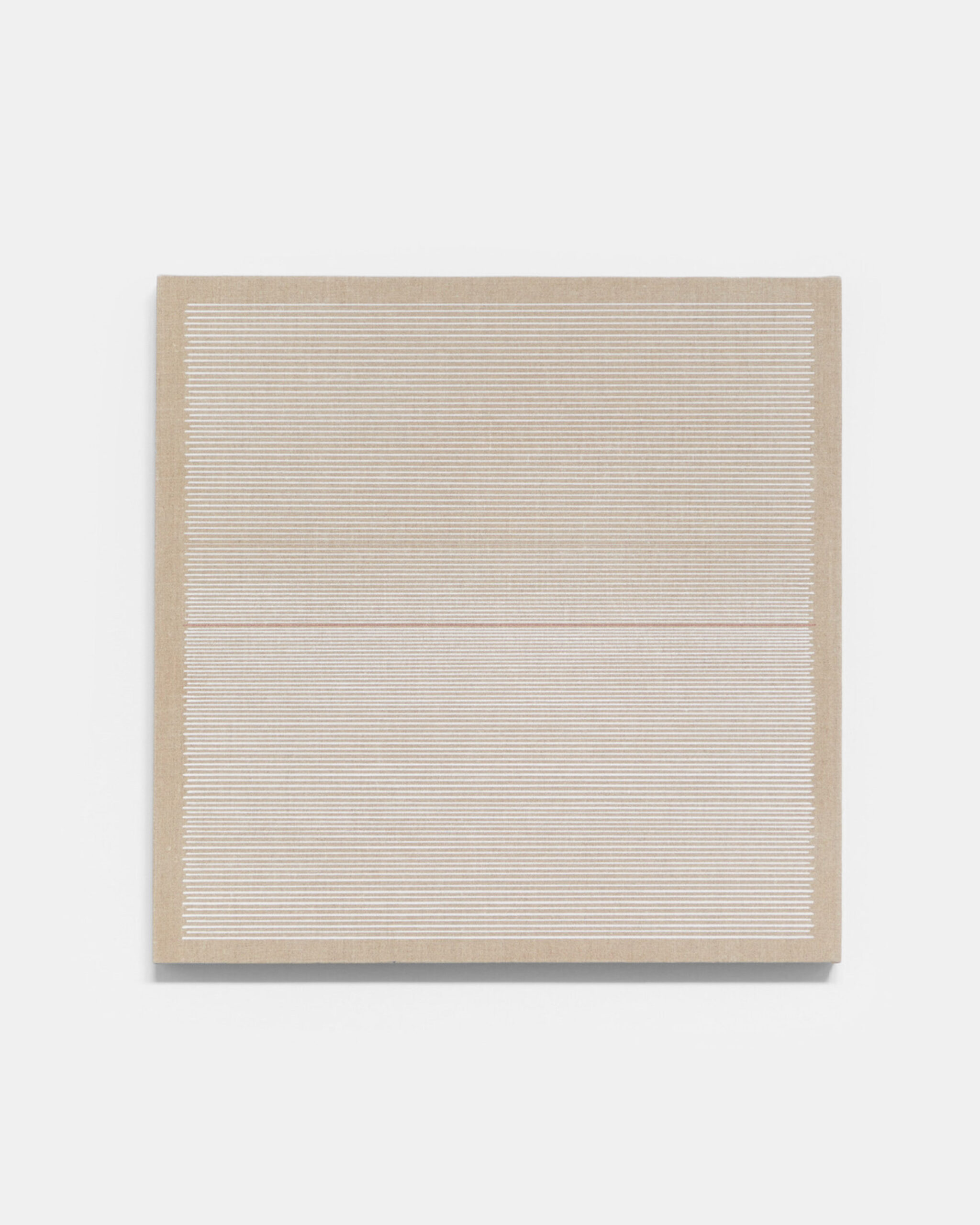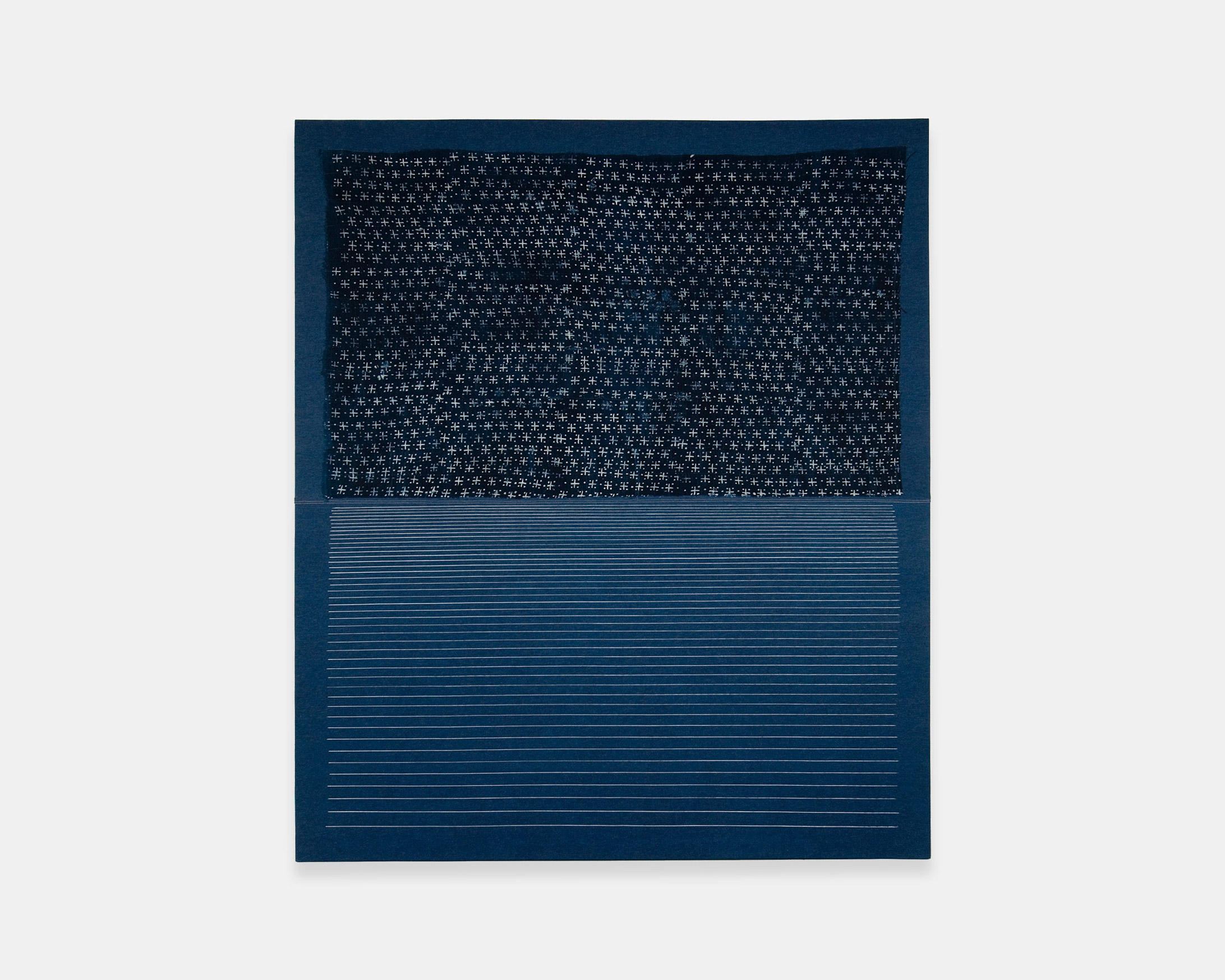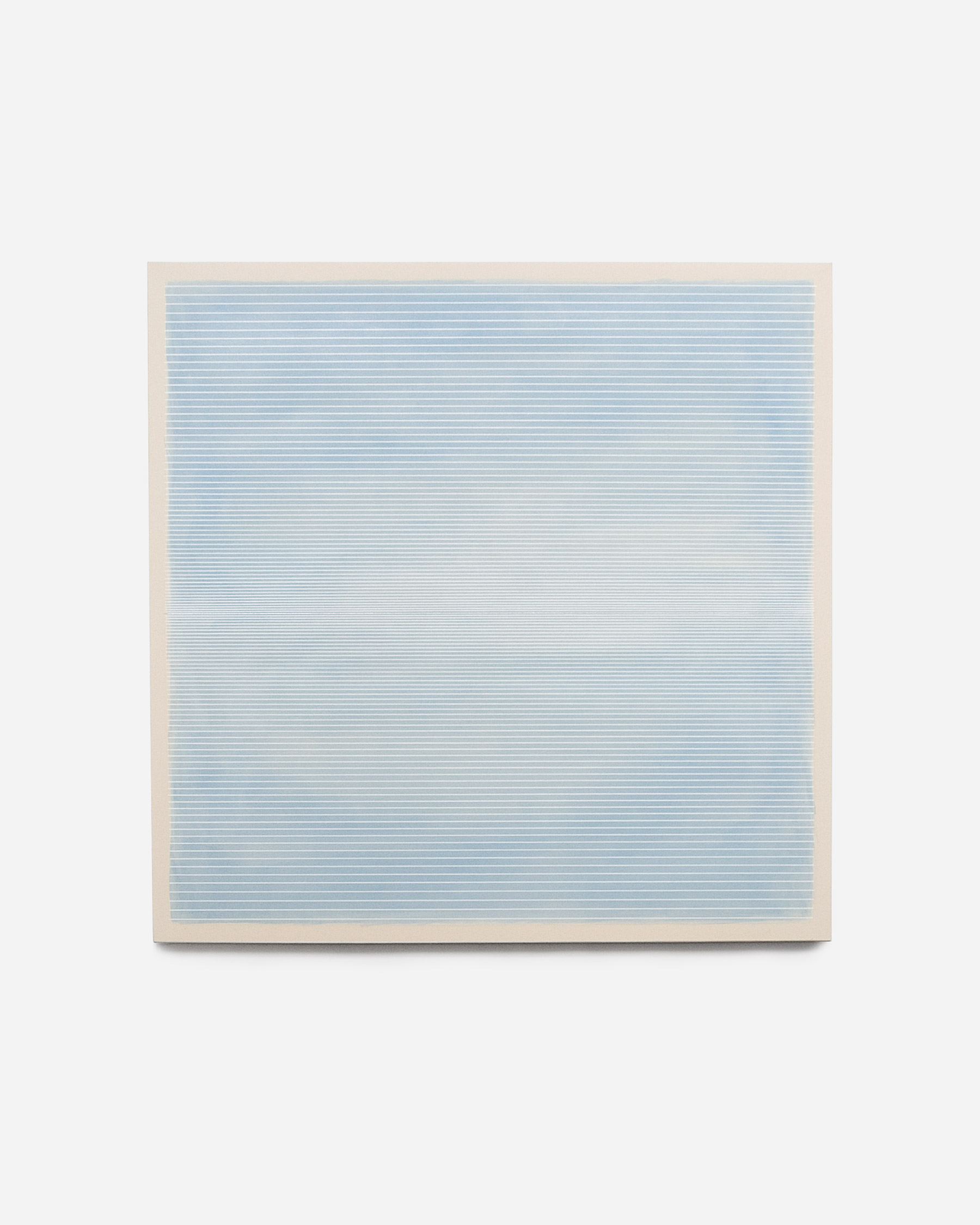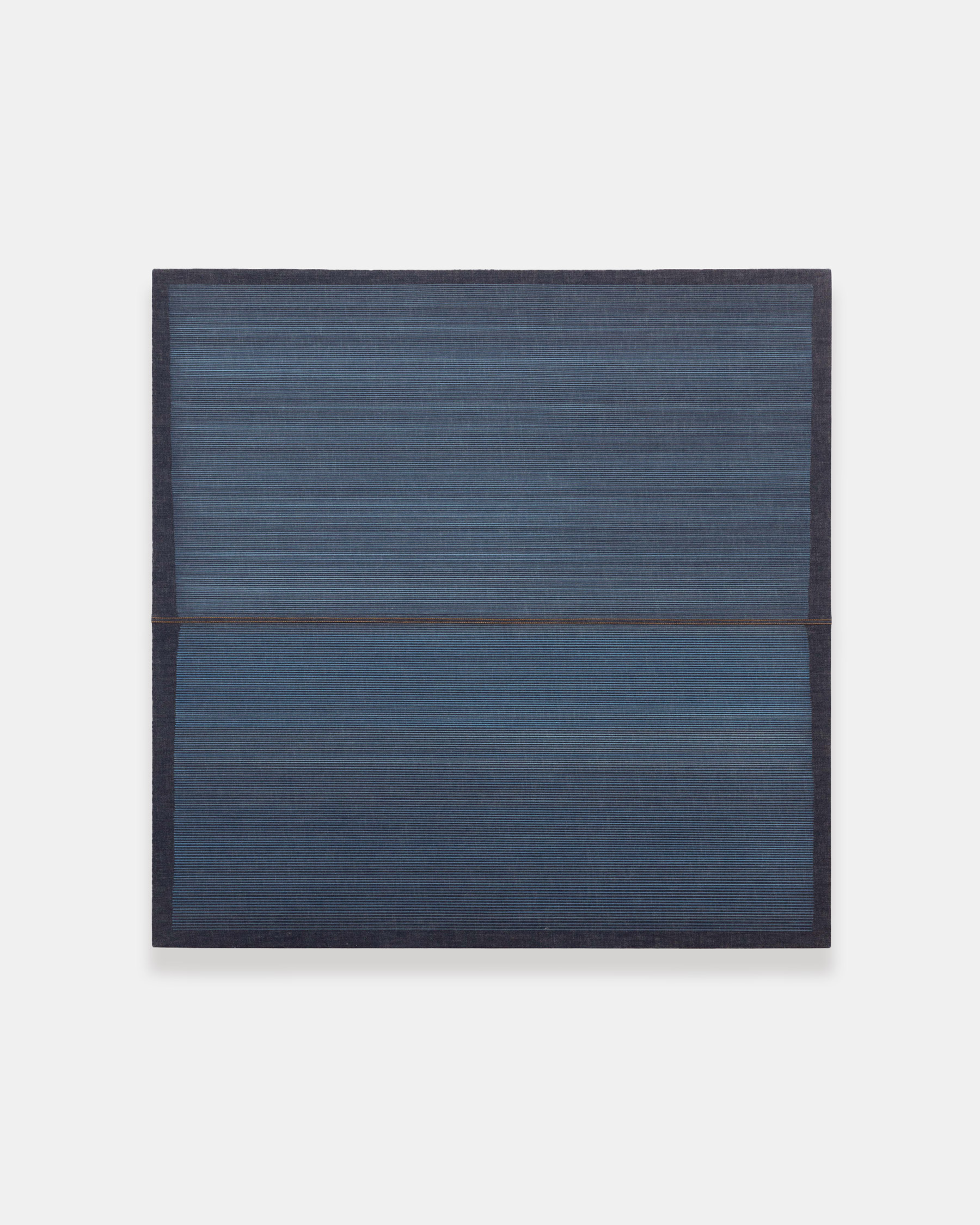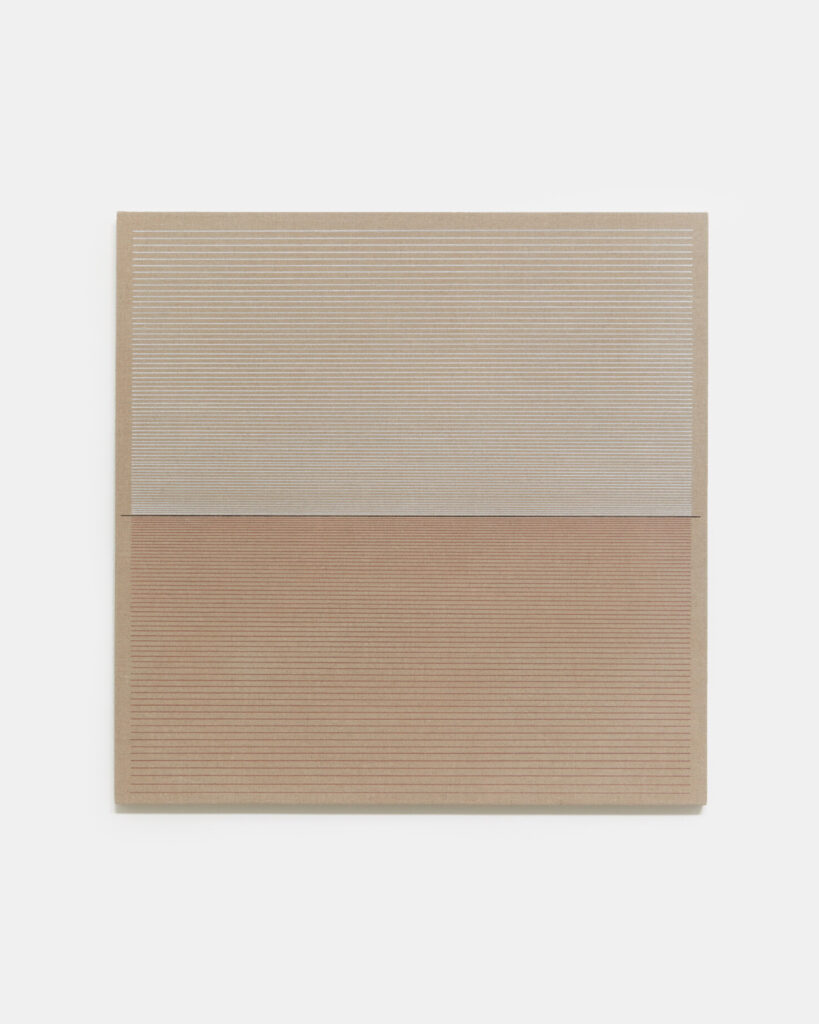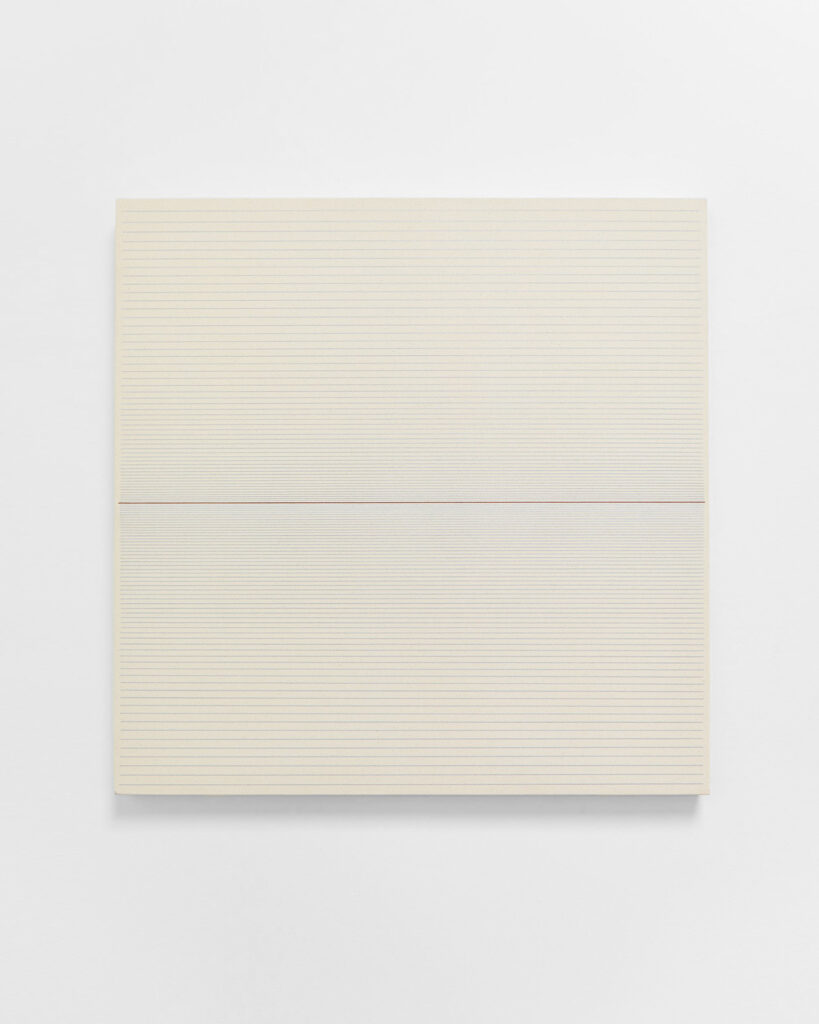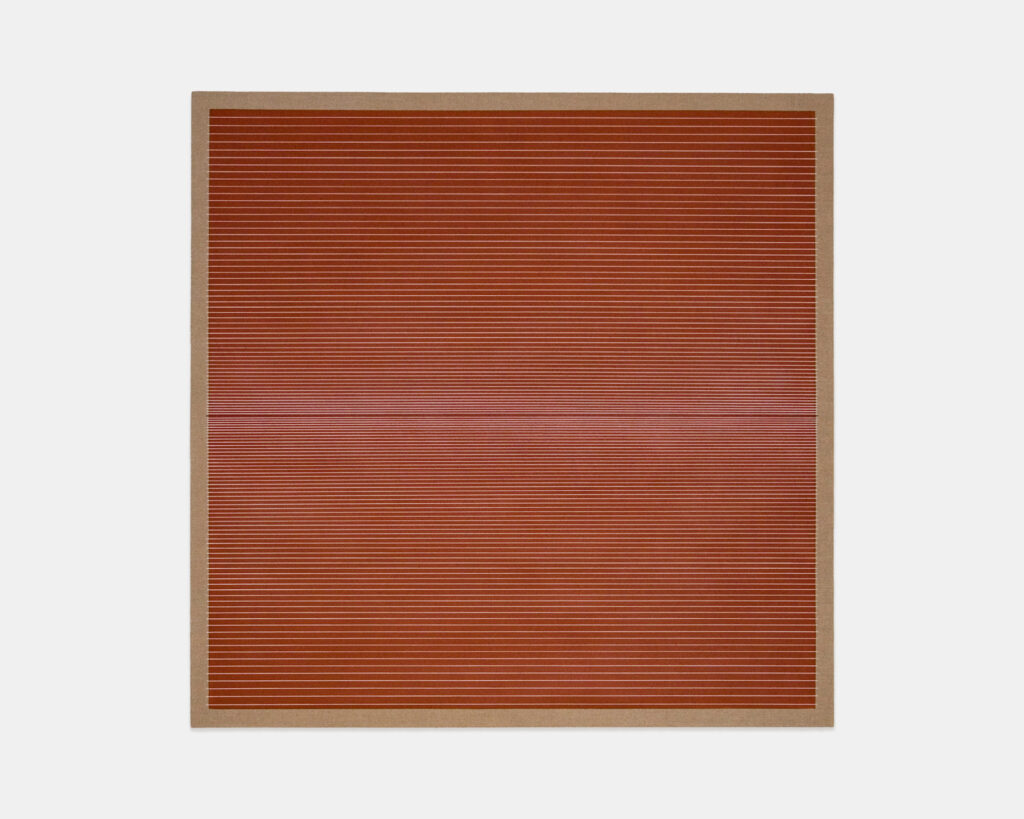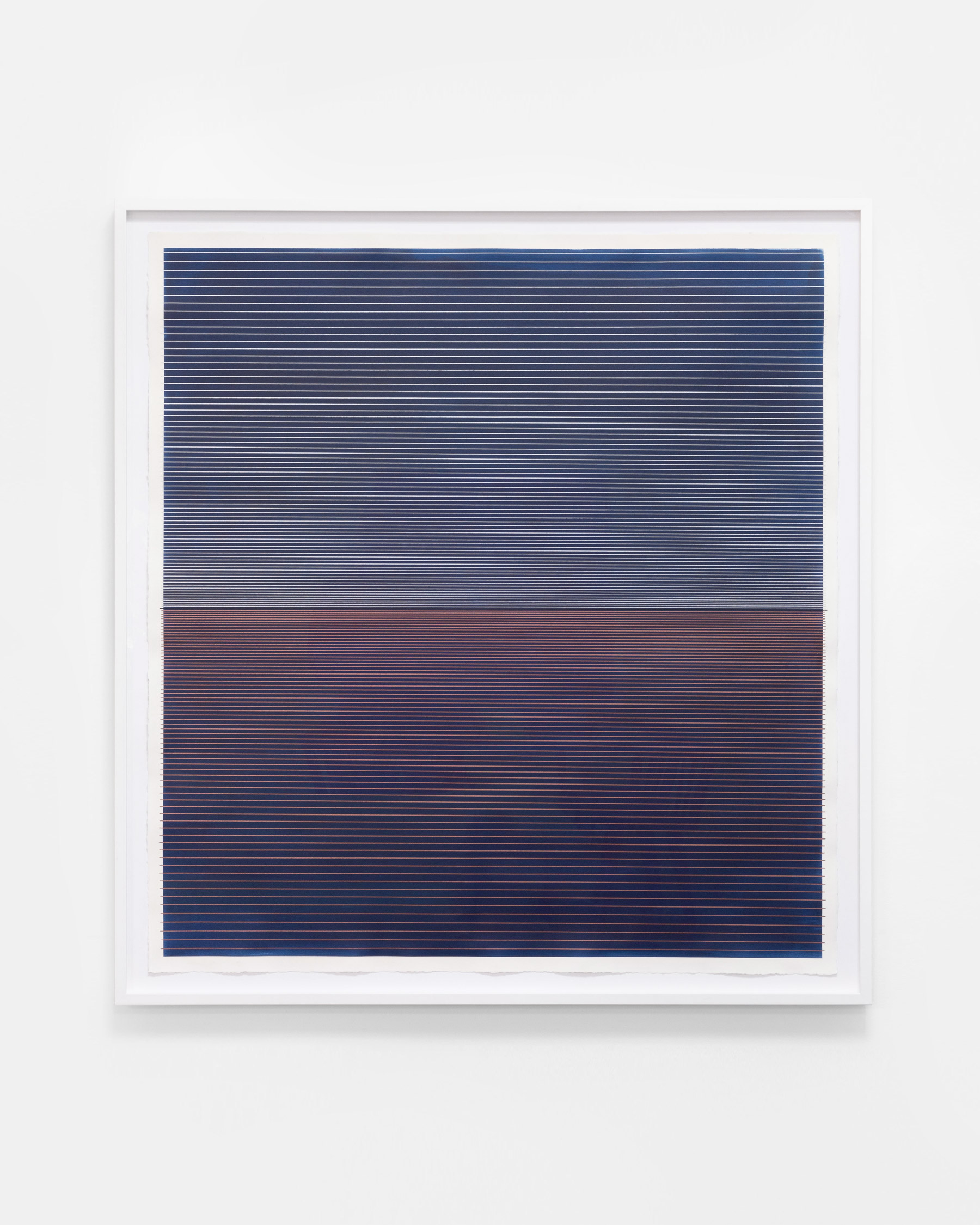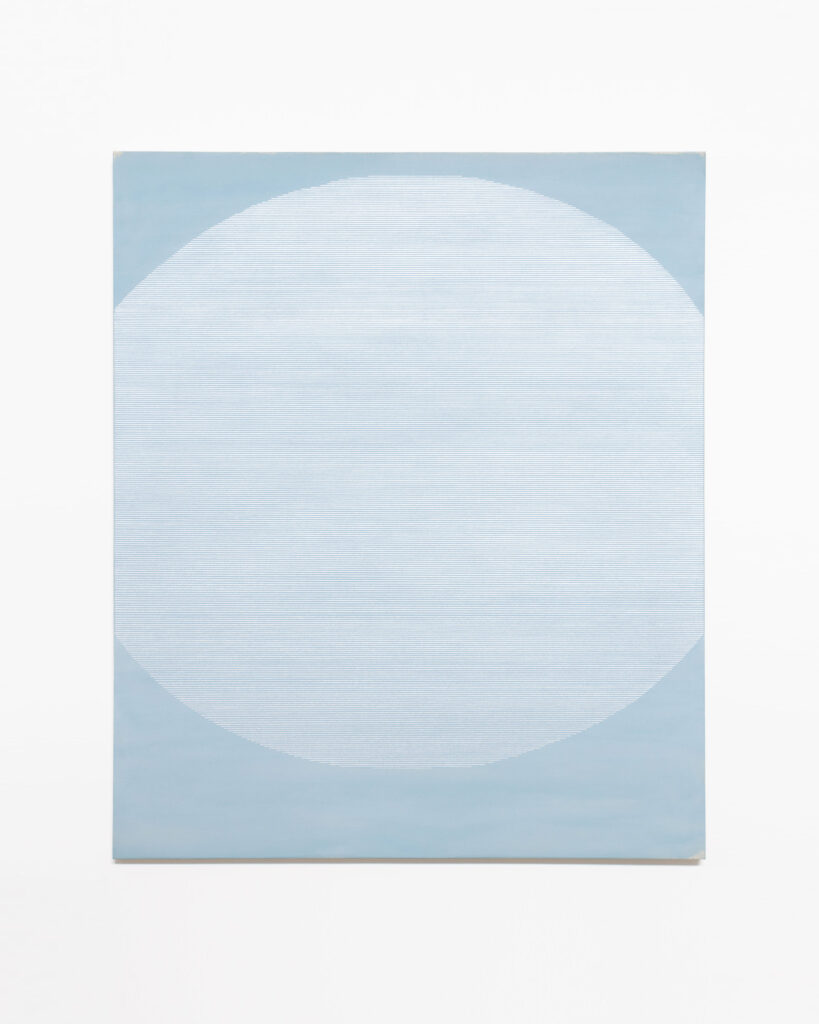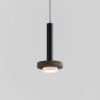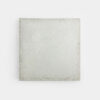In the latest edition of our interview series, we once again dive into the world of minimalist aesthetics. In inspiring conversations with creative minds from the fields of architecture, design, and art, we explore how they are guided by their vision and how they express it in their works. Along the way, they provide us with interesting insights into their creative process and reveal how they perceive and shape the world. This time, I had the pleasure of having an inspiring conversation with Alexander Jowett.
Alexander Jowett (b. 1971) is an introspective artist from Canada whose work focuses on the representation of open meditative spaces. Inspired by Immanuel Kant’s reflections on perception and the philosophy of line, he explores themes of loneliness and existentialism. Jowett often uses traditional and unconventional materials such as linen, rope, and denim in his subtle works and strives to create works that leave room for individual interpretation and experience.
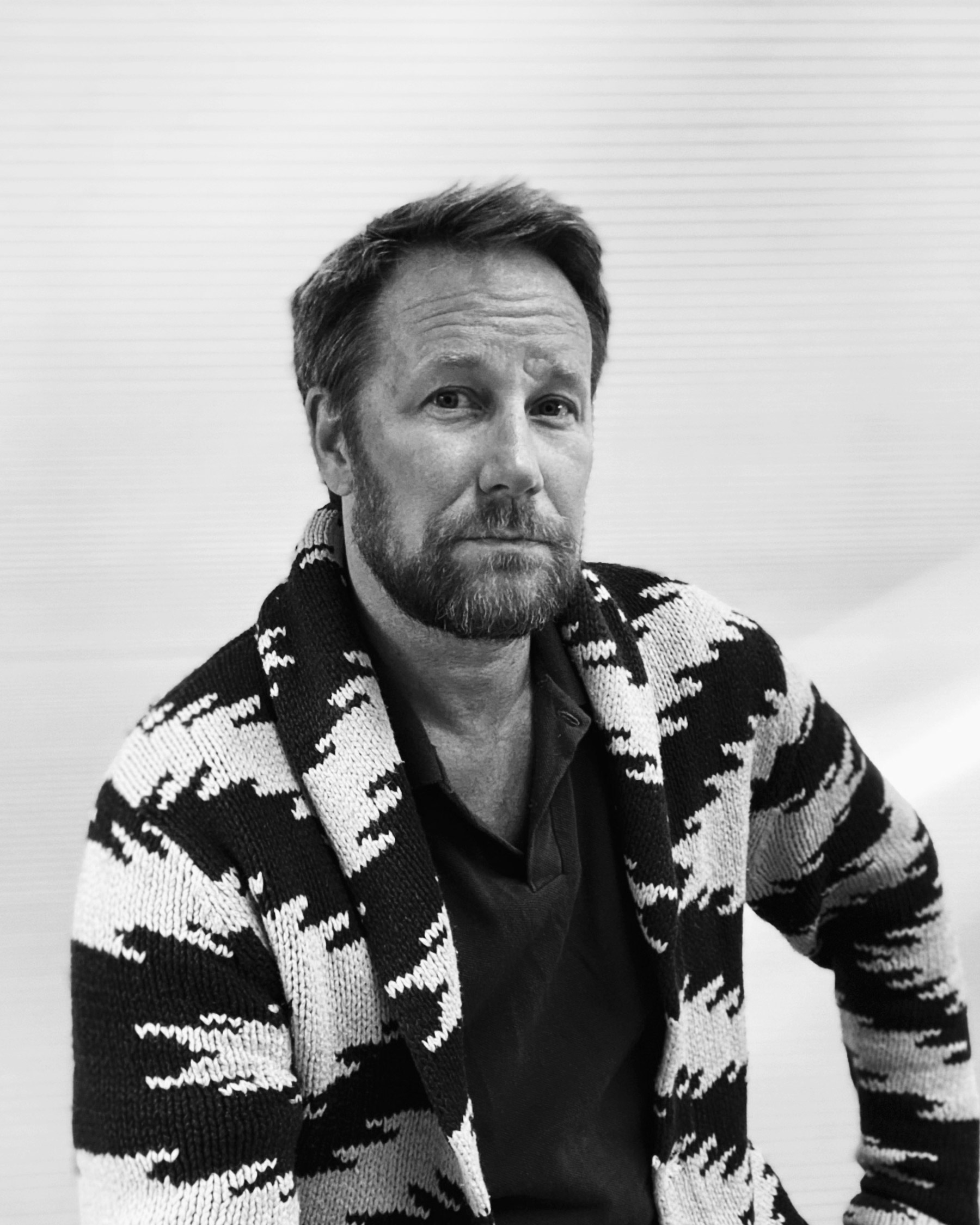
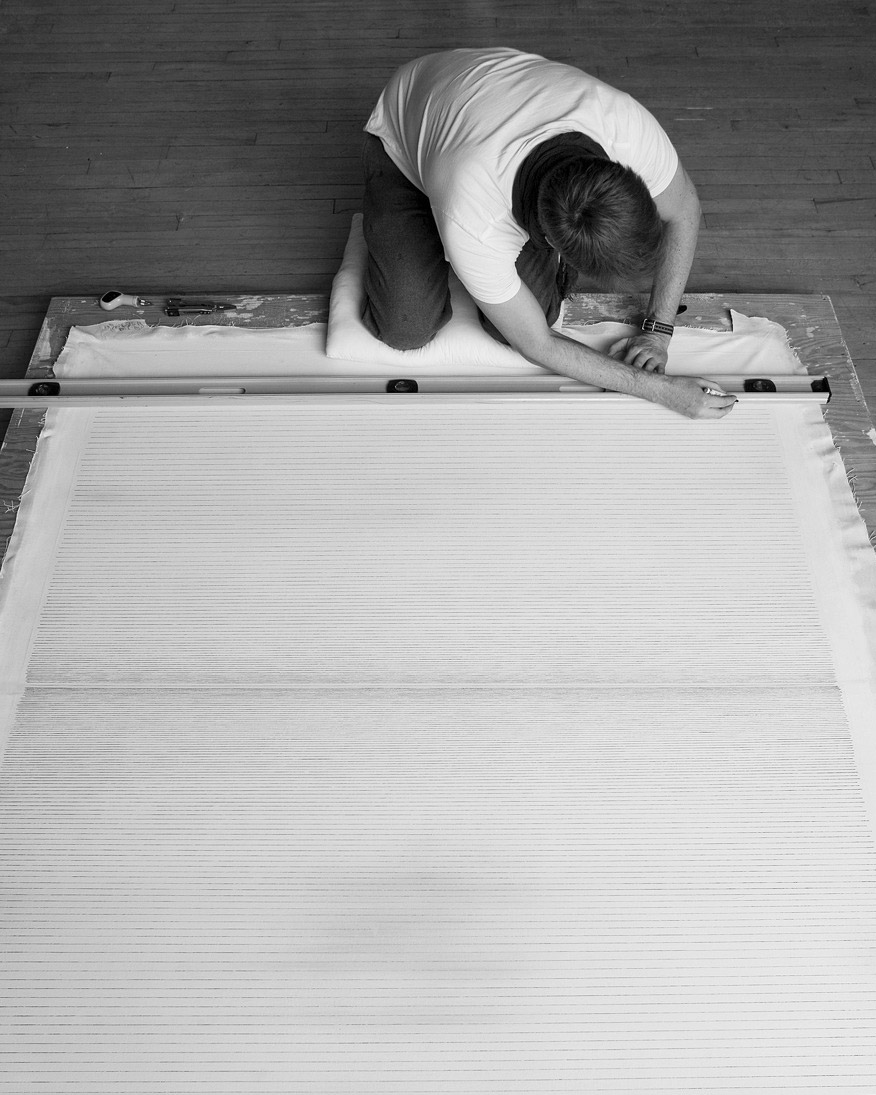
Alexander, thank you for your time! Please tell us, how did your artistic journey begin? Was there a pivotal moment that led you to become an artist?
Even though art was part of my life from a young age (I used to paint birds heaps as a child) and my father was an architectural photographer and director of the Visual Arts department of a Canadian art college, and my grandmother collected a lot of art (including Howard Hodgkin, John Brown etc.), my path to working in the art world was a very slow one.
For many years, I worked as a peripatetic freelance water sports photographer and writer, usually working for magazines, as I travelled the world. But at some point in my 30’s art just kept calling to me more and more; first through photography, but then that evolved into what I do now. It was essentially a long, slow evolution to what I do now.
How would you describe your work to someone who has never seen it?
That’s a difficult one, as at first, I had to help describe my work to people who were looking at it. Essentially, I would say I draw these open meditative spaces (the sea and sky, or sand and sky) in simple meditative lines. But the works are more about ways of seeing than they are about depicting anything concrete.
The works are more about ways of seeing than they are about depicting anything concrete.
The horizon line is a central theme in your art. What does it symbolize for you personally, and how has it developed into the main theme of your work?
Essentially, my works evolved from lectures I took at University (doing a BA, with a major in Philosophy). The main one being on Kant’s ‘Critique of Pure Reason’ and how a line is not simply a line, but is essentially a series of dots and the only reason we see it as such is due to the surface it’s on and the light in the room etc. (This is part of the reasoning behind using different surfaces such as: linen, denim, canvas jute etc. as they all create different ‘lines’ so to speak).
It goes on to discuss ways of seeing and how we ‘see’ things, not simply based upon what is in front of us, but by past experience as well. This idea, coupled with me having spent many years travelling, sailing and surfing around the world, evolved into my drawing this typology of sorts — the horizon lines series, which aren’t really paintings (despite me using paint) and are more typically drawings.
The actual horizon line itself is somewhat symbolic of hope, I would say.
Some of your works refer to the philosophies of Zen, among other things. Since I have been practicing Zazen myself for over 10 years, I am curious — which concepts or texts are reflected in your works?
I should say that I don’t practice any formal meditation or adhere to any strict Zen tenets. However, I do feel my pieces do have some Zen traits such as; kanso (simplicity); *fukinsei (asymmetry)(*my horizons are always off center); shizen (naturalness) and sei-jaku (tranquility). But also, and maybe more importantly, I draw the lines in a slow meditative process on my knees, which is why most of my works are canvas, linen, denim etc. stretched over wood panel.
In this manner, I hope that the meditative aspects of the process are imbued in the works. Further to that, I am not really trying to depict or represent the sea and sky, horizon etc. as they are, but I am more trying to create a distilled abstraction of how this ever-changing constant in the world embodies our mind and spirit, in a way.
Oftentimes I use the word ‘dreaming’ in the titles to reference that they are drawings of memories vs. representative depictions of a place and time. For me, it was always a meditative and calming thing, whether I was sitting, looking out to sea, or simply remembering those moments.
So, I hope the artworks are able to communicate some of that.
What connection do you see between minimalist art and meditation?
My own works are a bit like those initial moments during sitting meditation, where it takes the body and mind a few minutes (or more) to settle into a sort of stillness. Nothing is initially revealed by the works, but the longer one sits with them the more they can unveil things: a sense of calm, a slightly hallucinatory affect, spatial openness, a sort of humming etc. and it takes a bit of patience on the viewer’s side to allow these things to happen.
But once one goes past this stage, the viewer brings their own experience into the works, and they then become something else.
Take us into your studio and your creative process. What inspires you to start a new work?
Since my process is quite slow (even small pieces take days to complete) I usually have whole series and groups of works in my head long before I get a chance to do them. So, for me, a lot of it is going through a very rhythmic day of waking up, having coffee, then going to work on whatever is to be done.
Since I don’t have a large studio or assistants etc. I am rarely working on more than one or two pieces at a time, and when I am drawing the lines, I can only do one work at a time. So a lot of my days are spent listening to downtempo music as I am on my knees drawing lines, then taking breaks to stretch etc.
My works are a bit like those initial moments during sitting meditation, where it takes the body and mind a few minutes (or more) to settle into a sort of stillness.
What role does the concept of intentionlessness in the creative process play for you? Is there a particular feeling that you want to evoke in the viewer?
In response to that, I like something a wonderful Canadian artist, Brian Jungen, said about audiences viewing his works; which is full of layers of meaning that are art-historical, personal and cultural. It was somewhat along the lines of “if someone looks at my work and smiles, that is enough for me.”
For me, people can stand in front of my works and bring their own experiences to the works. So they can peel back philosophical and spiritual layers, or simply allow for a calm smile to be the ultimate experience of the works. Either, or both, are fine by me. I don’t feel people lose anything by not delving deeper. But, if they choose to, there is much more to discover.
I think all kinds of people have differing reactions to the same sorts of things, so I don’t expect anyone to have a particular reaction to my work. Especially, as I know, they aren’t always easy to look at. But, for those willing to take a bit of time with them, there are lots of layers to peel away; philosophical, meditative, color theory, and so on. Mainly, I do hope people get a sense of calmness or stillness upon viewing the works.
What are you currently working on and what are your plans for the future? Are there any subjects that you would like to explore further?
Yes, lots. My latest show ‘A Kind of Blue: the Solace of Open Spaces’ delves into the color blue, in an almost monochromatic sense, and scratches the surface of its deep history. But it is (hopefully) just the first in a series of shows that explore more singular color groupings (white, black, pink etc.)
I also want to explore a bit more with implementing sound and smell etc. along with aesthetic works that sort of intermingle ideas of art vs. craft and so on. I have lots of ideas, but it is always a process of filtering which ones will be best to concentrate energy on. I also want to do ceramics and other forms of sculpture in the future!
Thank you very much for your time, Alexander!
More about Alexander Jowett
https://alexjowettart.tumblr.com/
https://www.instagram.com/jowieepics/
Alexander Jowett is represented by:
https://www.alisonmilne.com/artists-1/alexanderjowett
https://www.paulkylegallery.com/represented-artists/alexander-jowett
